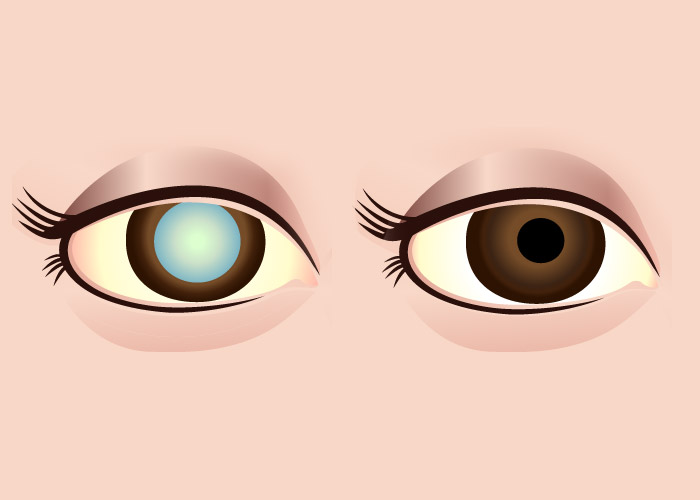Cataracts & Cataract Surgery

A cataract is a lens opacity that appears cloudy and affects vision. Along with reduced vision, there are other unfavorable effects. Cataracts are mostly due to aging, thus are more prevalent in the aging population. Other causes include medication use, systemic conditions, trauma etc.
Different forms of cataracts occur. Nuclear sclerosis is the yellowing discoloration of the lens centre, eventually becoming a brunescent shade. Due to natural aging, it is common in the senior population. While the lens discoloration results in a slightly altered color perception, its hardening causes a myopic shift in vision. Patients often experience a larger decrease in distance vision than near, hence have an easier time reading and doing other near activities.
As the name suggests, posterior subscapsular cataracts are characterized by an opacity near the posterior portion of the lens. They often result in glare and difficulty reading, and frequently occur in individuals younger than fifty. These cataracts as associated with chronic inflammation, steroid use, diabetes, trauma and radiation.
Cortical cataracts are a third type, with spoke-like projections towards the lens centre. Sometimes associated with glare, they often do not become problematic until far advanced.
Secondary cataracts are the posterior opacification of the lens, common after cataract surgery is performed. Unless they result in visual discomfort for the patient they are often not removed.
Congenital cataracts occur at birth, and often are a result from an infection the mother had (ie. rubella). Some require extraction, and thus are removed in a timely manner to prevent irreversible amblyopia. In addition to cataract removal, patients are often referred to a pediatrician for proper management of any underlying conditions.
Treatment of cataracts is in the form of surgery, and is often done when patient’s lifestyle is affected. In other words, surgery is performed when the patient experiences enough symptoms warranting action, rather than when the first signs of cataracts are observed. Before surgery, though, a work-up is completed in order to determine if the patient’s vision is solely affected from the cataracts or if there is another underlying condition contributing. This often determines whether or not cataract surgery will be helpful.
The surgery itself is a routine outpatient procedure, with few complications. A small incision is made at the front of the eye on the cornea, and the lens is then removed via phacoemulsification. Soon after lens removal, a synthetic intraocular lens (IOL) is inserted into the lens capsule. No sutures are required as a very small incision is made. Various options exist for IOLs: monovision, multifocal, or single vision. With monovision lens implants, one eye can be made far-sighted and the other near-sighted. Multi-focal implants are fairly new, but are advancing quickly. More commonly, implants can be chosen so that vision is ideal for either distance or near.
Post-operative care is quite simple. Patients are required to use three topical medications: a steroid, NSAID and an antibiotic. This routine is very important to ensure an uncomplicated recovery. Follow-up appointments are frequent, at one day, one week, one month and four months post-op. It is at the one-month mark that the patient will receive a new prescription for glasses if deemed necessary.
There are some complications that can occur with cataract surgery, but they are not too common. The list includes a secondary cataract, which can be treated with a laser procedure called a YAG capsulotomy, a dislocated lens, cystoid macular edema (inflammation of the retina) and increased intraocular pressure to name a few. Although these complications can occur, the serious ones seldom do, and cataract surgery is considered a safe routine procedure.
For more information, please call us or visit our Beyond Vision optometry at Millwoods, Edmonton today.

